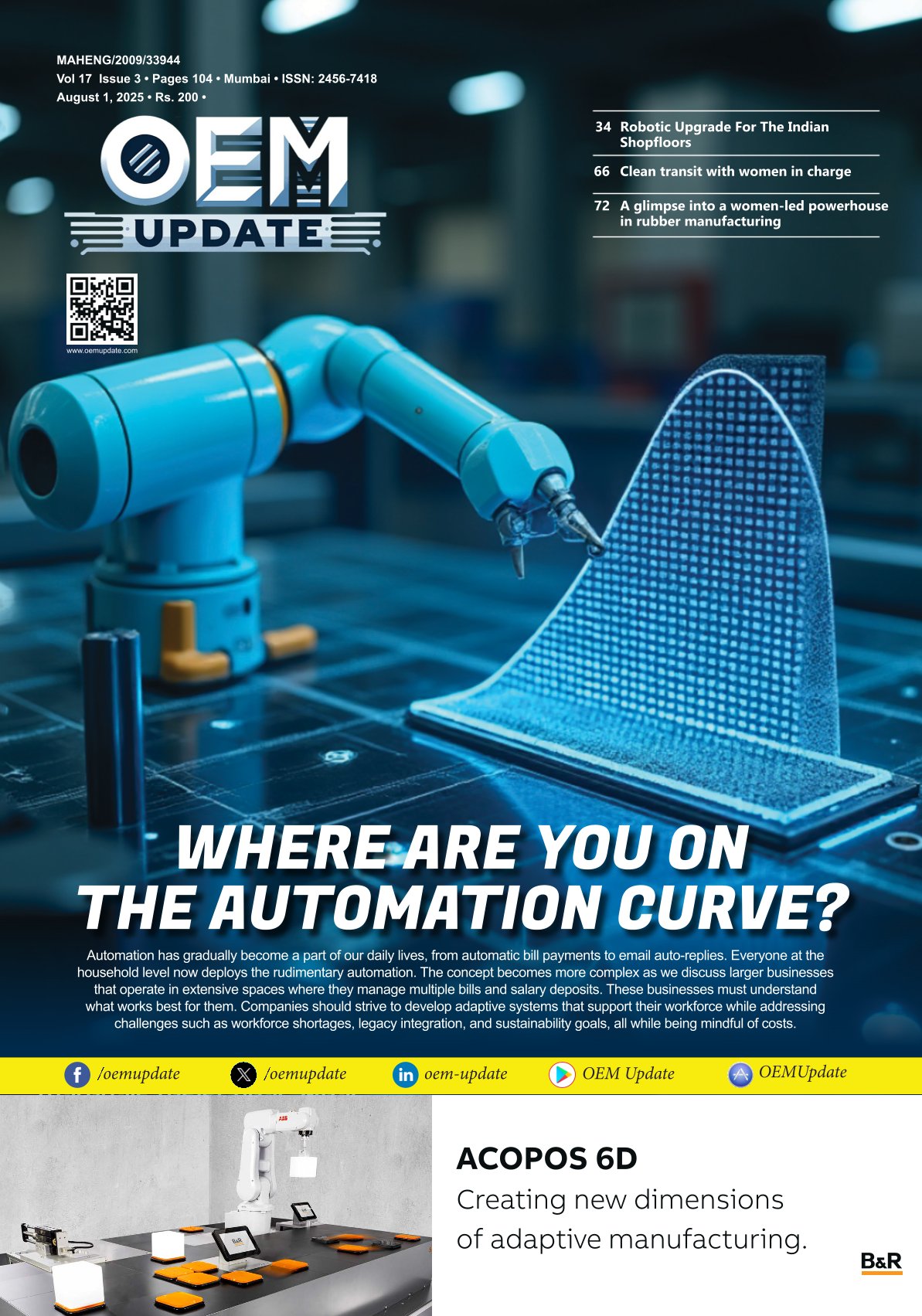How to enhance CNC utilisation thereby productivity
By admin February 12, 2016 5:30 pm IST
Experts from the industry speak on enhancing CNC utilisation thereby productivity and the latest products in CNC
There are various ways of enhancing productivity in a CNC machine, thereby improving the overall utilisation of the machine – reducing set-up time, positive ergonomics and increasing cutting parameters.
“We generally ignore to reduce the set-up time, though much can be achieved through it. Also, as manufacturers of cutting tools, we focus on improving productivity by increasing parameters. For this we develop new geometries which break the chips effectively into small pieces so that most of the heat generated during machining is carried away by the chip. We also develop new grades, which can withstand high hot hardness, thereby facilitating higher cutting speeds, and thereby increasing productivity,” says Gautam K Ahuja, Managing Director, Dormer Tools India Pvt Ltd.
Keshav Khurana, Executive Director, Wohlhaupter India Pvt Ltd feels, “For the best utilisation of CNC machines, planning is the key. Shopfloor process flow, providing material and machining inputs to the machines in efficient ways can improve the utilisation and thereby productivity to begin with. Following the correct workflow/ process flow suiting the component can result in desirable results. Then comes the role of efficient machines and tools, reducing the cycle time. Capable machines as per component, suitable tools greatly help in productivity improvement.”
In todays’ era, manufacturers are constantly thriving to increase productivity, performance and profit while lowering costs. CNC technology helps them accomplish this by increasing throughput.“TCO (Total cost of ownership) and MTBF (Mean time between failure) helps you get a better understanding of uptime, machine utilisation and cost per part. In ‘just-in-time’ manufacturing environment, CNC’s reliability, efficiency and advancements can help to reduce cycle time and thereby also reduce the overall cost per part,” states Nitesh Gupta, GM – Product and Business Development, Haas Automation.
When purchasing a new machine tool it is easy to focus solely on the capital cost of the equipment, without taking into account the recurring costs necessary to run and maintain the machine.
Manufacturers are being constantly challenged to increase productivity while lowering costs, like developments in the personal computing industry, the rate of CNC advancement also has accelerated. Similarly, it is no longer acceptable for a CNC manufacturer to have a computing platform linger for a decade or more.
“CNC machines are mother machine in any industry. Since CNC machines come in existence quality and productivity enhance many times. Production CNC are smarter and faster now days while dies and mould CNC are more precision and advance,” says Rajesh Kushwaha, MD, Multi axis CNC-Gurgaon.
Increased use of CNC machines or CNC automation doesn’t result in enhanced productivity directly. Systematic training in manufacturing practices is highly crucial and well trained manpower can bring in significant improvement in productivity and quality levels thereby increased profitability. Amidst the competitive work environment today, effective utilisation of resources including CNC machines, tooling, work holding and other accessories is the key to realise ever growing need for higher productivity.
As per Kushwaha, while using CNC machines in dies and moulds and enhance the productivity, following things must be considered:• Machine foundation• Machine rigidity• Spindle power• Work holding device• Cooling device• Tool holding device• Tool selection• Run out (tool holder or spindle)• CAM programming• Parameter selection• Data transfer or DNC• Skilled operator.
Reducing cycle timeUsing the latest CNC technology that integrates a high-speed CNC with drive system hardware containing servo and spindle motors featuring ultrasmooth rotation, accurate current detection, and high-resolution feedback devices helps to reduce cycle time.
Bell-shaped acceleration or deceleration minimises machine shock and reduces movement time. This can be applied to rapid, contouring, and tapping motions.Some other functions that can affect cycle time are:• Contour control: This function looks ahead in the part program to eliminate the acceleration or deceleration and servo delays that limit feed rates when cutting short line segments or contours. It also eliminates machining trajectory errors in corners and small radii.• Nano-smoothing: Nano-smoothing converts CAM-generated line segments into no-uniform rational basis splines (NURBS) curves for faster execution while at the same time improving surface finishes.• Jerk control: By reducing the rate of change of acceleration, vibration is suppressed as is machine shock and the associated machining errors.• Auto-following High Response Vector (HRV): These servo and spindle drive filters suppress mechanical resonance even when the frequency changes.• High-speed Smooth Tool Center Point (TCP): Specifically for high-speed machining (HSM), this function creates a NURBS curve through programmed points, smoothes tool vectors, and controls unwanted acceleration or deceleration to reduce cycle times.
“Adaptive control is an example of added technology that can assist in increasing productivity. The purpose is to reduce cycle time by way of dynamically optimising cutting feed rates in order to reduce chatter and keep a constant chip load on the cutting tool,” says Kushwaha.
Tool identification is another example of a machine tool enhancement that can decrease downtime by scanning tool holders to automatically pick up tooling parameters and input that information directly into the machine tool’s offset register, eliminating operator error.
Improving surface finishToday’s CNC systems typically offer submicron resolution or nano-resolution throughout, from internal calculations and stored values through to the interpolator, the drive system, and back through the position feedback devices.
Kushwaha says, “High-resolution count-per-revolution feedback devices create superior surface finish quality when contouring and this minimises the need for secondary operations, reducing delivery times and part cost.”
Reducing cost per partWhen purchasing new equipment, it is easy to fall into the trap of focusing on the one-time acquisition cost while not fully appreciating all of the recurring costs to run and maintain this equipment.
In today’s just-in-time manufacturing environment, equipment availability, reliability, and productivity all are true cost factors, as are the more traditional energy, operation, and maintenance costs. It is very important to consider the cost of a machine over its lifetime of operation. A reduction in downtime can also yield major dividends in terms of cost per part. The purpose of this is to drive more reliability in addition to higher processing.
Cookie Consent
We use cookies to personalize your experience. By continuing to visit this website you agree to our Terms & Conditions, Privacy Policy and Cookie Policy.











